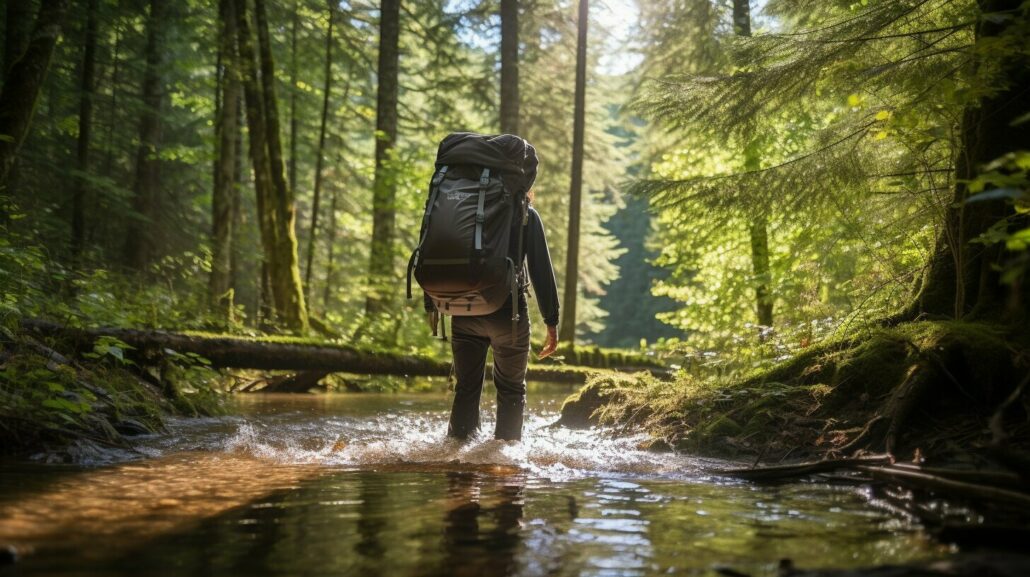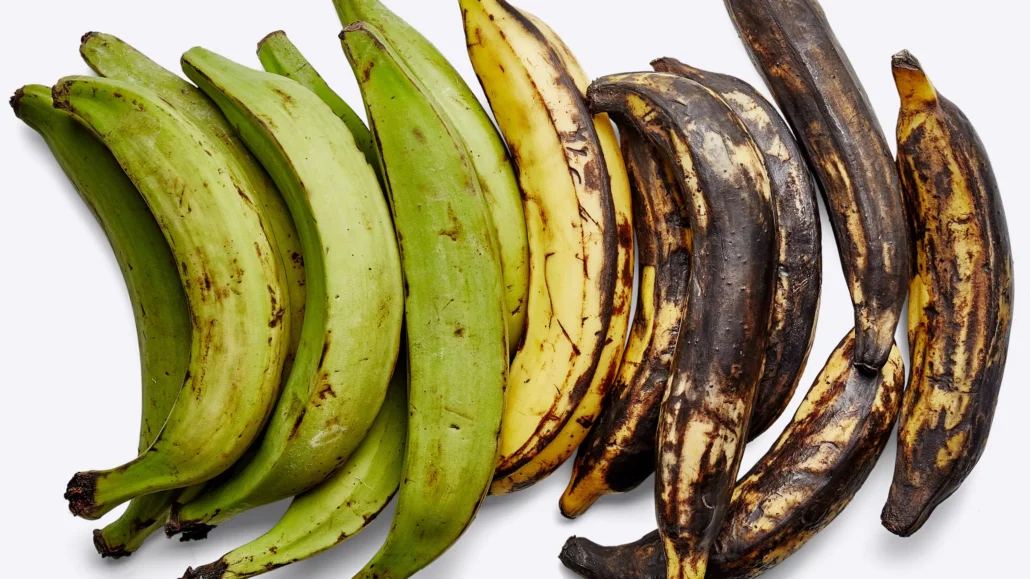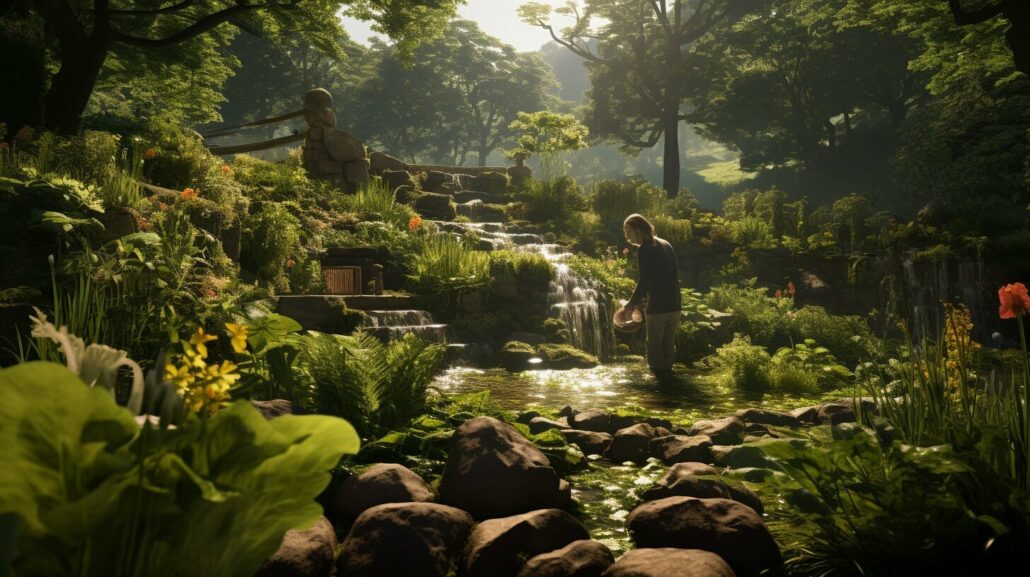Finding water sources is crucial for survival in the wild. In this guide, I will share valuable tips on how to locate and access clean water when venturing into nature.
Key Takeaways:
- Identify natural water sources like streams, rivers, and lakes by observing signs of flowing water, listening for trickles, and observing bird behavior.
- Collect rainwater using containers or by creating makeshift collection areas with ponchos or tarps.
- Harvest dew by tying absorbent materials around your ankles and walking through tall grass to collect the moisture-laden dew.
- Extract water from fruits, vegetables, cacti, and pulpy plants by smashing them into a pulp.
- Utilize plant transpiration by tying a bag around a leafy tree branch and collecting the condensation that forms.
Understanding Natural Water Sources: Streams, Rivers, and Lakes
Streams, rivers, and lakes are abundant sources of fresh water in natural environments. Understanding how to identify and access these water bodies can be essential for your survival in the wilderness.
When searching for natural water sources, keep an eye out for signs of flowing water. Look for areas where the vegetation appears lush and green, as this could indicate the presence of a nearby stream or river. Listen carefully for the sound of trickling water, which can often lead you to a reliable water source. Additionally, observe the flight path of birds, as they tend to frequent areas close to water.
To make use of streams, rivers, and lakes, it’s important to approach them with caution. Always prioritize safety and avoid crossing fast-flowing water unless absolutely necessary. Look for calmer sections or areas with stepping stones or fallen logs that can serve as a bridge. In certain situations, it may be necessary to walk upstream to find a cleaner water source.
Remember, not all natural water bodies are suitable for drinking. Even seemingly clean water can contain harmful bacteria and parasites. To ensure your safety, always filter or purify the water before consuming it. There are various methods available, such as using portable water filters, boiling the water, or adding water purification tablets. Prioritize your health and take the necessary precautions to prevent waterborne illnesses.
| Pro Tips: |
|---|
| Carry a water bottle with a built-in filter to easily collect and filter water from streams and rivers. |
| Boiling water is the most effective way to kill bacteria and parasites. Bring the water to a rolling boil for at least one minute before cooling and consuming it. |
| When filtering water, choose a filter that is capable of removing bacteria, protozoa, and other contaminants to ensure your safety. |
By understanding how to locate and utilize natural water sources such as streams, rivers, and lakes, you can enhance your chances of survival in the wilderness. Remember to exercise caution, filter or purify the water, and prioritize your health and well-being.
Collecting Rainwater: Making Use of Nature’s Gift
Rainwater is a valuable resource that can be collected to provide hydration when venturing into the wild. Let’s explore how you can effectively collect rainwater for survival purposes.
When it rains, don’t let that precious water go to waste. One simple method of collecting rainwater is to use containers or bottles to catch and store it. Place these containers strategically in open areas to maximize water collection. Additionally, you can tie a poncho or tarp to trees to create a makeshift collection area. The water that collects in these impromptu catchment areas can be a reliable source of hydration in the wilderness.
Another technique for collecting rainwater is to utilize natural materials to funnel the water into your containers. Constructing a simple rainwater harvesting system using large leaves or tree branches can enhance the amount of water you can collect. These natural materials can act as gutters, directing the flow of rainwater into your containers.
| Materials Needed: | Steps: | |
|---|---|---|
| Container/bottle | 1. Place containers strategically in open areas to catch rainwater. | |
| Poncho or tarp | 2. Tie a poncho or tarp to trees to create a makeshift collection area. | |
| Large leaves or tree branches | 3. Use natural materials to funnel rainwater into your containers. | |
Remember, rainwater is generally safe to consume, but it is always important to filter or purify the water before drinking it. This will help remove any potential contaminants and ensure your safety. Boiling, using portable water filters, or adding purification tablets are effective methods for making rainwater safe to drink.
Collecting rainwater is a skill that can be vital in situations where clean water sources are scarce. By utilizing natural materials and implementing the proper purification methods, you can turn nature’s gift into a reliable source of hydration during your outdoor adventures.
Harvesting Dew: Nature’s Hidden Moisture
When other water sources are scarce, utilizing dew can be a lifesaver. Discover the method of harvesting dew for hydration during your wilderness adventures.
Harvesting dew is a simple yet effective way to obtain moisture in dry environments. To collect dew, tie absorbent materials, such as clothes or grass tufts, around your ankles. Walk through tall grass or vegetation early in the morning when the air is cooler. As you move, the absorbent materials will capture the moisture-laden dew, providing you with a source of hydration.
“Walking through the dew-covered grass in the early morning is like stepping into a hidden oasis. The absorbent materials on my ankles become saturated with dew, offering me a refreshing drink in the midst of wilderness.”
Remember to choose absorbent materials that are clean and free from any contaminants. Avoid walking through areas that may have been treated with pesticides or chemicals. It’s also important to note that dew collection works best in areas with high humidity and cooler temperatures, such as forests or meadows.
Table: Benefits of Harvesting Dew
| Advantages | Considerations |
|---|---|
| Provides a natural source of hydration | Dependent on environmental conditions |
| Requires minimal equipment | May not yield large quantities of water |
| Accessible in various wilderness environments | Need to ensure cleanliness of absorbent materials |
By incorporating dew harvesting into your survival skills, you can augment your water sources and increase your chances of staying hydrated in the wild. Remember to always filter or purify any water obtained from dew or other natural sources to remove possible bacteria or contaminants before consumption.
Extracting Water from Fruits, Vegetables, and Plants
Nature provides us with edible sources that can also serve as a water supply. Learn how to extract water from fruits, vegetables, and plants to stay hydrated in the wild.
When in the wild, it’s important to know how to source water from the environment around you. One of the lesser-known methods is by extracting water from fruits, vegetables, and plants. This technique can come in handy when natural water sources are scarce or inaccessible. Here are some simple steps to follow:
- Select fruits and vegetables that are high in water content, such as watermelon, cucumber, and oranges.
- Use a clean cloth or your hands to squeeze and press the fruits and vegetables to extract the liquid.
- Collect the extracted liquid in a container or drink it directly.
In addition to fruits and vegetables, certain plants can also be a source of water. Cacti, for example, store water in their fleshy stems. To extract water from a cactus:
- Find a mature cactus with a thick stem and carefully remove its spines.
- Cut off a section of the stem and split it open.
- Use a clean piece of cloth or your hands to squeeze the cactus to release the water.
- Collect the water in a container or directly drink it.
Caution:
Be cautious when consuming water from plants. Not all plants are safe to drink from, as some may contain toxins or harmful substances. It is important to have a good knowledge of the local flora and to consult a reliable source or a wilderness expert before attempting to extract water from plants.
| Fruit/Vegetable/Plant | Water Content |
|---|---|
| Watermelon | 92% |
| Cucumber | 96% |
| Oranges | 87% |
| Cactus | Up to 90% |
Remember, although extracting water from fruits, vegetables, and plants can provide a source of hydration in the wild, it is essential to filter or purify the water before consuming it. This will help remove any potential bacteria or impurities, ensuring your safety in the wild.
Utilizing Plant Transpiration: An Innovative Method
Plant transpiration can be a resourceful way to find water in nature. Discover how you can utilize this innovative method to ensure your survival in the wilderness. In the absence of readily available surface water sources, plants can offer a hidden reservoir of hydration. By harnessing the natural mechanism of transpiration, you can collect water from plant leaves and branches.
To make use of plant transpiration, you will need a plastic bag or a piece of waterproof material. Tie the bag securely around a leafy tree branch, ensuring that it covers as much of the foliage as possible. Over time, as the sun heats the leaves, the moisture within them will evaporate, creating condensation inside the bag. This condensation is essentially purified water that you can collect and drink.
It is important to remember that not all plants are suitable for transpiration. Look for trees with large, healthy leaves and ample foliage. Avoid plants that are highly toxic or have thorny branches. Additionally, the size of the bag and the amount of condensation collected will depend on factors such as the temperature, humidity, and the health of the plant.
By understanding and utilizing plant transpiration, you can tap into a hidden water source in nature. Remember to always be cautious and responsible when collecting and consuming any water found in the wild. It is essential to filter and purify the water to remove any potential contaminants before drinking.
| Key Points: | Benefits |
|---|---|
| 1. Utilizing plant transpiration can help you find water in nature. | – Access to a hidden water source. – Can be a lifesaver in arid environments. |
| 2. Collect condensation from plant leaves and branches. | – Purified water source. – Requires a plastic bag or waterproof material. |
| 3. Look for leafy trees with healthy foliage. | – Optimal transpiration potential. – Avoid toxic or thorny plants. |
| 4. Filter and purify water before consuming. | – Remove potential contaminants. – Ensure water safety. |
Finding Water in Arid Environments: Tree Crotches, Rock Crevices, and Wells
In dry and arid landscapes, water sources may be limited, but they can still be found. Explore various locations such as tree crotches, rock crevices, and wells that can provide much-needed hydration in these environments.
Tree crotches, where branches intersect or form a “V” shape, can often collect rainwater or condensation, offering a potential source of water. Look for sturdy trees with crotches that can hold water, and use a container or cloth to collect the moisture trapped within.
Rock crevices are another valuable resource in arid environments. Water can accumulate within the gaps between rocks or in depressions on the ground. Carefully inspect rocky areas and small formations to identify potential water sources. Use a cloth or container to collect any water found.
If you’re unable to find water through natural means, digging a well may be necessary. Look for areas with signs of vegetation or damp soil, as these indicators suggest the presence of underground water sources. Dig a hole several feet deep and wait for water to seep in. Be patient and cautious during this process to avoid collapses or contamination.
| Location | Method |
|---|---|
| Tree Crotches | Look for sturdy trees with crotches and use a container or cloth to collect rainwater or condensation. |
| Rock Crevices | Inspect rocky areas and small formations to find gaps between rocks or depressions where water may accumulate. Collect water using a cloth or container. |
| Wells | Identify areas with signs of vegetation or damp soil, then dig a hole several feet deep and wait for water to seep in. |
Remember, when drinking water from these sources, it’s essential to filter and purify it to remove any potential contaminants. This can be done using portable water filters, purification tablets, or by boiling the water for at least one minute.
By understanding the unique characteristics of arid environments and utilizing techniques tailored for these landscapes, you can increase your chances of finding and accessing water, ensuring your survival in even the harshest conditions.
Melting Snow and Ice: A Winter Water Source
When surrounded by snow or ice, it is possible to extract water for hydration. Find out how to melt and utilize snow and ice as a water source during your winter adventures. In snowy or icy conditions, nature provides a unique opportunity to obtain water when other sources may be scarce. However, it is crucial to remember that all water found in the wild should be filtered and purified before consumption to ensure safety.
To melt snow or ice and convert it into drinking water, you need a reliable heat source. Start by gathering clean snow or ice from untouched areas away from pollution or contamination. Avoid using discolored or yellow snow, as it may contain impurities.
Once you have collected the snow or ice, it’s time to melt it. You can use a portable camping stove, a metal container, or even a fire-resistant pot. Place the snow or ice into the container and heat it over your chosen heat source. Make sure to stir the melting snow or ice occasionally to ensure even melting. Be patient, as the process may take some time depending on the amount of snow or ice you have and the intensity of your heat source.
| Melting Snow and Ice: A Step-by-Step Guide |
|---|
| 1. Collect clean snow or ice from uncontaminated areas. |
| 2. Prepare a heat source such as a camping stove or fire-resistant pot. |
| 3. Place the snow or ice into a container over the heat source. |
| 4. Stir the melting snow or ice occasionally for even melting. |
| 5. Wait patiently until all the snow or ice has melted. |
| 6. Allow the melted water to cool before transferring it to a clean container for drinking. |
Once all the snow or ice has melted, let the resulting water cool before transferring it to a clean container. This will ensure that the water is safe to drink. Remember, melting snow and ice can be a valuable water source in winter conditions, but it should always be properly filtered or purified to remove any potential contaminants or harmful bacteria.
Filtering and Purifying Wild Water: Ensuring Safety
While finding water in nature is essential, ensuring its safety is equally important. Explore the different methods of filtering and purifying wild water to protect yourself from harmful bacteria.
There are several effective techniques for filtering and purifying wild water that can help you stay hydrated and avoid waterborne illnesses. One common method is using a portable water filter or purification system. These devices are designed to remove impurities and bacteria, providing you with clean drinking water. Look for filters that have been tested and certified by reputable organizations, ensuring their effectiveness.
Another method is boiling water. Boiling water for at least one minute can kill most types of bacteria and parasites, making it safe to drink. However, keep in mind that boiling water may not remove certain chemicals or impurities, so additional filtration methods may be necessary.
| Methods | Advantages | Disadvantages |
|---|---|---|
| Portable Water Filters | – Removes bacteria and impurities – Easy to use and carry – Long-lasting | – May not remove certain chemicals or viruses |
| Boiling Water | – Kills most bacteria and parasites – Simple and effective method – Requires only a heat source | – Does not remove chemicals or impurities – Requires time and fuel for boiling |
| Chemical Water Treatment | – Kills bacteria, viruses, and parasites – Lightweight and portable – Can be used as a backup method | – May leave an unpleasant taste – Requires waiting time for the chemicals to take effect |
Chemical water treatment is another option for purifying wild water. Using chlorine or iodine tablets or drops, you can effectively kill bacteria, viruses, and parasites. However, keep in mind that this method may leave an unpleasant taste in the water, and you may need to wait for the chemicals to take effect before consuming it.
Remember, regardless of the method you choose, it is crucial to follow the manufacturer’s instructions and guidelines to ensure proper filtration and purification. It is also essential to regularly clean and maintain your filtration or purification system to ensure its effectiveness. By taking these precautions, you can confidently enjoy safe and clean drinking water during your outdoor adventures.
Conclusion
Water is a fundamental element for survival in nature. By utilizing the techniques discussed in this guide, you can ensure your safety and hydration while exploring the great outdoors.
When searching for water in nature, it is essential to be observant and resourceful. Look for signs of flowing water, such as ripples or wet patches, and listen for the sound of trickles or rushing water. Observing bird behavior can also be helpful as birds tend to flock around water sources.
In addition to natural water sources like streams, rivers, and lakes, you can also collect rainwater by using containers or creating makeshift collection areas using ponchos or tarps. Dew, which accumulates on grass and vegetation, can be collected by tying absorbent clothes or grass tufts around your ankles and walking through tall grass.
When natural water sources are scarce, you can extract water from fruits, vegetables, cacti, and pulpy plants by smashing them into a pulp. Another innovative method is utilizing plant transpiration by tying a bag around a leafy tree branch and collecting the condensation that forms.
If you find yourself in an arid environment, look for water in tree crotches, rock crevices, or consider digging wells. In snowy or icy conditions, melting snow and ice can serve as a water source. However, remember to always filter and purify any water you find in the wild to remove harmful bacteria and ensure your safety.
Remember, finding water in nature is crucial for survival, but it’s equally important to prioritize safety and take necessary precautions. With the knowledge and techniques provided in this guide, you can embark on your wilderness adventures with confidence, knowing that you have the skills to find and access water in nature.
FAQ
Q: How can I find water sources in nature?
A: Look for signs of flowing water, listen for the sound of trickles, and follow the flight path of birds to locate water.
Q: Can I collect rainwater for drinking?
A: Yes, you can collect rainwater by using containers or tying a poncho or tarp to trees to create a collection area.
Q: Is it possible to collect dew for drinking water?
A: Yes, you can collect dew by tying absorbent clothes or grass tufts around your ankles and walking through tall grass.
Q: How can I extract water from fruits, vegetables, and plants?
A: You can extract water by smashing these items into a pulp to release the water content.
Q: What is plant transpiration and how can it be used to obtain water?
A: Plant transpiration is the process of moisture evaporating from leaves. You can tie a bag around a leafy tree branch to collect the condensation that forms.
Q: Where can I find water in arid environments?
A: In arid environments, water can be found in tree crotches, rock crevices, and by digging wells.
Q: Can I melt snow and ice for drinking water in snowy conditions?
A: Yes, you can melt snow and ice to obtain drinking water in snowy or icy conditions.
Q: Should I filter or purify water found in the wild?
A: Yes, it is important to filter or purify any water found in the wild before drinking to remove harmful bacteria.










